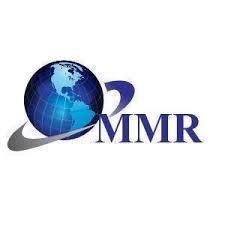The travel insurance market is poised for substantial growth, with an increasing number of consumers seeking protection against unforeseen risks while traveling. As global travel recovers and expands, several factors—ranging from market drivers to potential restraints—are shaping the landscape. For insurers, identifying and leveraging growth opportunities while navigating challenges will be crucial to capturing market share and sustaining long-term success. This article delves into the key growth drivers, restraints, and strategies for overcoming market challenges in the travel insurance sector.
Growth Drivers of the Travel Insurance Market
1. Recovery of Global Travel and Tourism
One of the primary growth drivers for the travel insurance market is the resurgence of global travel following the COVID-19 pandemic. With international travel bouncing back, particularly as borders reopen and restrictions ease, more travelers are seeking protection against potential disruptions, such as flight delays, cancellations, or medical emergencies. According to the UNWTO, international tourist arrivals reached pre-pandemic levels in 2023, fueling demand for insurance products that offer comprehensive coverage for a wide range of risks.
Additionally, travel patterns are shifting, with consumers increasingly opting for long-haul travel, adventure tourism, and more personalized itineraries, creating demand for specialized coverage. These changing travel trends contribute to the continued expansion of the travel insurance market, as insurers cater to a broader array of needs.
2. Increased Awareness of Travel Risks
Awareness of the risks associated with travel has reached unprecedented levels, largely due to the ongoing health crisis, geopolitical instability, and natural disasters. Travelers are more conscious of the potential for health emergencies, trip cancellations, lost baggage, and flight delays, and are increasingly looking for insurance to mitigate these risks. In particular, the pandemic underscored the importance of comprehensive coverage, including medical evacuation, trip interruption, and coverage for COVID-19-related issues.
As global risks become more apparent, travelers are recognizing the necessity of travel insurance, driving the demand for products that provide a safety net in times of crisis.
3. Technological Advancements in Insurance Solutions
The digital transformation of the travel insurance industry has significantly contributed to its growth. Digital platforms and mobile applications have made it easier for consumers to purchase, manage, and claim their insurance policies. Online channels and apps offer a seamless purchasing experience, enabling travelers to compare policies, access real-time assistance, and submit claims quickly. AI-driven technologies further streamline the insurance process by enabling personalized pricing models, improving fraud detection, and accelerating claims settlement.
The rise of insurtech companies has led to a surge in innovation, enabling insurers to offer more flexible, customized solutions. Additionally, the integration of chatbots and virtual assistants allows customers to get assistance instantly, improving satisfaction and boosting consumer trust.
4. Rise of Niche and Personalized Insurance Products
Another key driver of growth is the increasing demand for niche and personalized travel insurance products. Traditional travel insurance policies often offered one-size-fits-all coverage, but as travelers’ needs evolve, insurers are tailoring their offerings to better match specific preferences. Whether for adventure sports, long-term travel, or specific health conditions, customized policies provide a greater sense of security and cater to a broader market segment.
For example, policies that cover activities like skiing, scuba diving, or hiking are becoming more popular, as are those offering coverage for pre-existing medical conditions. This flexibility is attracting a more diverse range of consumers and expanding the overall market.
Restraints Impacting the Travel Insurance Market
1. High Price Sensitivity Among Consumers
Price sensitivity remains one of the key challenges for the travel insurance market. While awareness of the importance of insurance has risen, many travelers are still hesitant to purchase policies due to perceived high costs. Travelers often weigh the cost of the insurance against the potential risk, and some may opt for lower-cost policies that may not offer adequate coverage.
This price sensitivity can hinder growth, particularly in markets with lower disposable incomes or among younger generations who may prioritize affordability over comprehensive coverage.
2. Lack of Consumer Awareness and Understanding
Despite the increasing awareness of the need for travel insurance, a significant portion of travelers still does not fully understand the scope and benefits of the coverage. Some travelers may purchase insurance without fully grasping what is covered and what is excluded, leading to dissatisfaction when claims are denied. This lack of understanding can hinder market expansion, as potential customers may feel overwhelmed or confused by the variety of products available.
Moreover, complex policy terms and conditions can contribute to confusion, particularly for first-time travelers or those who do not have experience with insurance products.
3. Regulatory Challenges
The travel insurance industry is subject to varying regulations across different regions, which can complicate policy offerings and increase operational costs. For instance, some countries require specific health coverage in policies, while others may impose limits on certain types of coverage, such as terrorism-related claims. The lack of uniform regulations can make it difficult for insurers to offer standardized products across global markets, limiting their ability to scale efficiently.
In addition, regulatory changes can increase compliance costs, forcing insurers to adapt their products and operations to meet new standards, which could impact pricing and profitability.
4. Impact of Natural Disasters and Unpredictable Events
Natural disasters, geopolitical instability, and pandemics can create unpredictable challenges for the travel insurance market. Events like hurricanes, earthquakes, and terrorist attacks can lead to widespread cancellations, disruptions, and emergency evacuations. While these events highlight the need for travel insurance, they also place significant strain on insurers, as they face an increase in claims. The uncertainty around these unpredictable events makes it difficult for insurers to accurately price policies, leading to increased risk.
Key Strategies for Overcoming Market Challenges
1. Enhanced Consumer Education
To address the lack of consumer understanding, insurers should focus on improving customer education. Simplifying policy terms, offering clear and concise explanations of coverage options, and providing easy-to-understand digital resources can help travelers make informed decisions. Educational campaigns can also raise awareness about the importance of comprehensive coverage, especially in regions where travel insurance penetration is low.
2. Cost Optimization and Flexible Pricing Models
To tackle price sensitivity, insurers can focus on offering flexible pricing models that cater to different budget levels. Providing more affordable base policies with optional add-ons allows travelers to customize coverage based on their specific needs and financial constraints. Offering tiered pricing, pay-per-trip options, and usage-based insurance models can also help make travel insurance more accessible and appealing to a broader range of consumers.
3. Embrace Technological Solutions for Efficiency
Investing in technology is critical for improving operational efficiency and customer satisfaction. The use of AI, machine learning, and chatbots can enhance customer experiences by providing quick responses, personalized recommendations, and efficient claims processing. Furthermore, automation of underwriting processes and claims management can help reduce costs and improve overall profitability.
4. Global Standardization of Insurance Products
To overcome regulatory challenges, insurers can work toward creating more standardized products that meet global regulatory requirements. By collaborating with regulatory bodies, insurers can develop universal policy frameworks that address the core needs of travelers while maintaining flexibility for regional differences. This would simplify the process for multinational companies and facilitate growth in global markets.
Conclusion
The travel insurance market is set for continued growth, driven by increased global travel, rising awareness of risks, and technological innovation. However, insurers must navigate challenges such as price sensitivity, consumer confusion, and regulatory complexities to remain competitive. By adopting strategies that focus on consumer education, flexible pricing, technological efficiency, and global standardization, insurers can overcome these challenges and capitalize on the expanding market opportunities. The key to long-term success will lie in adapting to the changing needs of travelers while maintaining operational efficiency and customer satisfaction.






